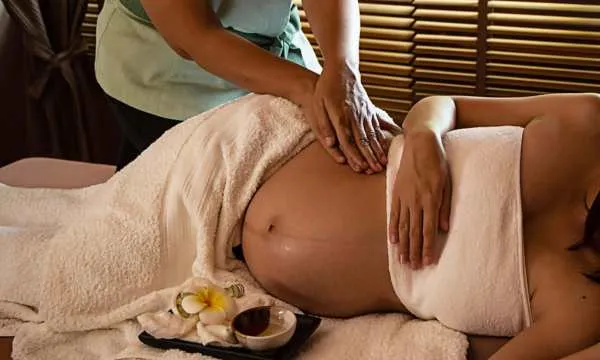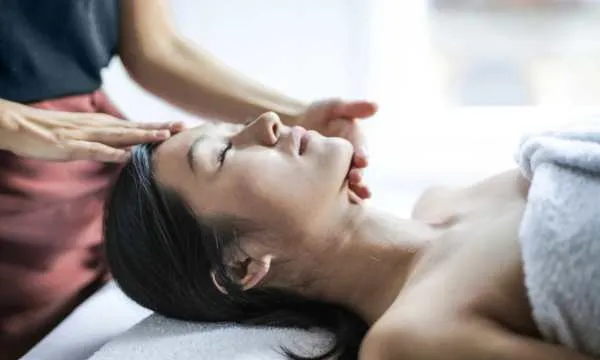Massage therapy has been used for centuries as a way to promote relaxation, reduce stress, and relieve muscle tension.
Ad
Over time, different techniques have been developed and integrated to provide a more holistic approach to massage therapy. By combining various techniques, massage therapists are able to customize treatments to meet the specific needs of each client.
One of the most popular techniques used in massage therapy is Swedish massage. This technique involves long, flowing strokes, kneading, and circular movements on the topmost layers of muscles.
Ad
It is a gentle and relaxing massage that helps to increase blood flow and reduce muscle tension. Another technique that is commonly used is deep tissue massage. This technique involves applying firm pressure and slow strokes to reach deeper layers of muscle and connective tissue.
It is often used to treat chronic pain and muscle injuries. In recent years, there has been a growing interest in integrating different massage techniques to provide a more comprehensive approach to massage therapy.
Ad
By combining different techniques, massage therapists can provide a more personalized treatment that addresses the unique needs of each client. This approach has been shown to be effective in reducing stress, promoting relaxation, and relieving muscle tension. In the following article, we will explore some of the different massage techniques that can be integrated to provide a more holistic approach to massage therapy.
Fundamentals of Massage Therapy
History and Evolution of Massage
Massage therapy has been around for centuries and has been used in many cultures throughout history. The ancient Greeks, Egyptians, and Chinese all used massage techniques to promote healing and relaxation.
In the Western world, massage therapy was introduced in the 19th century and has since become a popular form of alternative medicine. Over time, massage therapy has evolved to include different techniques and approaches. Today, there are many styles of massage therapy, each with its own unique benefits and applications.
Basic Massage Techniques
There are several basic massage techniques that are commonly used in massage therapy. These include:
- Effleurage: a long, smooth stroke used to warm up and relax the muscles
- Petrissage: kneading and squeezing movements used to release tension and promote circulation
- Friction: circular or back-and-forth movements used to break up knots and adhesions in the muscles
- Tapotement: rhythmic tapping or pounding movements used to stimulate the muscles and promote relaxation
Massage therapists may use one or more of these techniques depending on the needs of the client.

Basic-Massage-Techniques – Source(Canva)
Anatomy and Physiology for Therapists
To be an effective massage therapist, it is important to have a thorough understanding of anatomy and physiology. This includes knowledge of the musculoskeletal, nervous, and circulatory systems, as well as an understanding of how different muscles and tissues work together. Massage therapists must also be able to identify areas of tension or injury in the body and develop treatment plans to address these issues.
This requires a combination of knowledge and skill, as well as the ability to communicate effectively with clients to determine their needs and preferences Overall, massage therapy is a holistic approach to healing that can provide many benefits for the mind and body. By integrating different techniques and approaches, massage therapists can help clients achieve optimal health and wellness.
Integrating Techniques for Holistic Therapy
Massage therapy is an effective way to promote relaxation, reduce stress, and alleviate pain. By integrating different techniques, massage therapists can provide a more comprehensive and holistic approach to healing. Here are some ways to integrate techniques for a more effective massage therapy experience.
Combining Eastern and Western Modalities
Eastern and Western massage techniques have distinct differences. Western techniques focus more on muscle manipulation, while Eastern techniques emphasize energy flow. By combining these techniques, massage therapists can address both physical and emotional needs of their clients.
For example, Shiatsu massage is a Japanese technique that uses finger pressure to stimulate energy flow, while Swedish massage is a Western technique that uses long strokes to relax the muscles. By combining these techniques, massage therapists can provide a more balanced and effective massage experience.
Adapting to Client Needs and Conditions
Each client has unique needs and conditions that require specific massage techniques. Massage therapists should be able to adapt to these needs and conditions to provide the most effective massage therapy experience.
For example, clients with chronic pain may benefit from deep tissue massage, while clients with anxiety may benefit from aromatherapy massage. By adapting to their clients’ needs, massage therapists can provide a more personalized and effective massage therapy experience.
The Role of Mindfulness in Massage
Mindfulness is the practice of being present at the moment and focusing on one’s thoughts and feelings. It can be a powerful tool in massage therapy, as it can help clients relax and release tension. Massage therapists can incorporate mindfulness techniques into their massages by encouraging clients to focus on their breath and the sensations they feel during the massage.
By incorporating mindfulness into their massages, massage therapists can provide a more holistic and relaxing massage therapy experience. In conclusion, integrating different massage techniques can provide a more comprehensive and holistic approach to healing.
By combining Eastern and Western modalities, adapting to client needs and conditions, and incorporating mindfulness into massages, massage therapists can provide a more personalized and effective massage therapy experience.
Advanced Applications
Massage therapy has been used for centuries to promote relaxation, reduce stress, and relieve muscle tension. However, massage therapy can also be used for more advanced applications such as sports massage and injury recovery, chronic pain management, and aromatherapy massage.
Sports Massage and Injury Recovery
Sports massage is a specialized form of massage therapy that is designed to help athletes prepare for and recover from physical activity. It can help improve flexibility, reduce muscle soreness, and increase blood flow to the muscles.
Sports massage can also be used to treat injuries such as sprains, strains, and muscle tears. During a sports massage, the therapist will use a variety of techniques such as deep tissue massage, stretching, and trigger point therapy to help improve the athlete’s performance and prevent injury. This type of massage is typically done before and after a sporting event or workout.
Massage for Chronic Pain Management
Massage therapy can also be used to manage chronic pain. Chronic pain is defined as pain that lasts for more than three months and can be caused by conditions such as arthritis, fibromyalgia, and back pain.
Massage therapy can help reduce pain and improve quality of life for people with chronic pain. During a massage for chronic pain management, the therapist will use a variety of techniques such as Swedish massage, deep tissue massage, and trigger point therapy to help relieve pain and improve range of motion. Massage therapy can also help reduce stress and anxiety, which can contribute to chronic pain.
Aromatherapy and Massage
Aromatherapy is the use of essential oils to promote healing and relaxation. When combined with massage therapy, aromatherapy can help enhance the benefits of massage. Essential oils such as lavender, peppermint, and eucalyptus can help reduce stress, relieve pain, and promote relaxation.
During an aromatherapy massage, the therapist will use a variety of techniques such as Swedish massage and deep tissue massage while incorporating essential oils into the massage oil or lotion. The therapist may also use a diffuser to help spread the scent of the essential oils throughout the room.
In conclusion, massage therapy can be used for more advanced applications such as sports massage and injury recovery, chronic pain management, and aromatherapy massage. By incorporating different techniques and modalities, massage therapists can provide a holistic approach to healing and relaxation.


